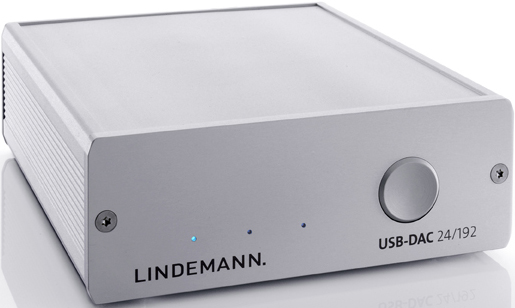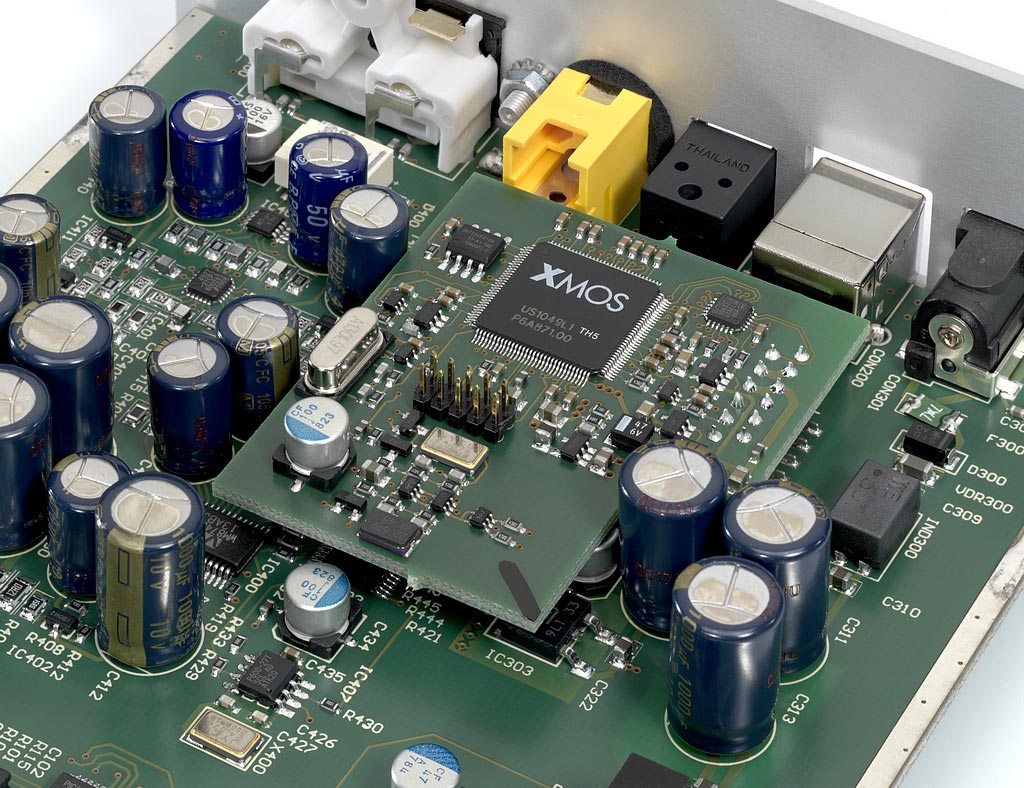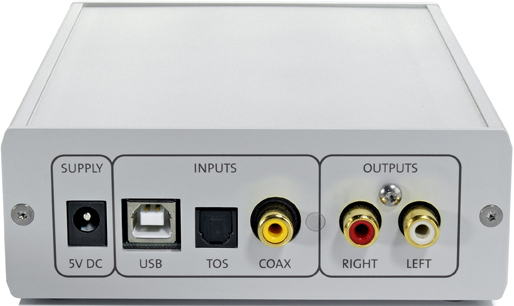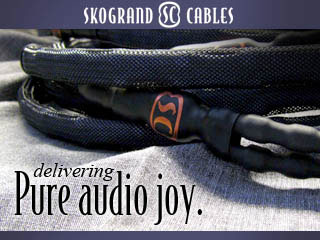Lindemann Audiotechnik was founded in 1992 by Norbert Lindemann. From the start the company’s goal has been to reproduce lifelike music in the traditions of the high fidelity pioneers of the 50s and 60s. They set out to use the latest technologies for music reproduction, so as to convey the emotion and immediacy of a live performance.
Their first product was an integrated amp, the AMP1. While popular in their homeland Germany, their breakthrough product was the AMP4. In 1999, they became one of the world’s first companies to produce a CD player with an upsampling DAC. This began the long line of CD and SACD players that established their reputation for analogue and musical sound. This is probably why when I think of Lindemann, I first think of their great digital players.
Description and Design Goals
The USB-DAC 24/192 is at the opposite end of the price point of most Lindemann digital products, yet still a Lindemann through and through. The Lindemann USB-DAC 24/192 is a small, nice looking DAC with a TosLink, coaxial, and an “asynchronous” USB input. According to Lindemann, the USB input uses proprietary asynchronous technology developed by Lindemann. All three inputs handle 24-bit, 192kHz data.
According to the company, the USB-DAC 24/192 came about after they finished the DAC for the 825 CD-Player. The design goal was to offer a DAC with high sound quality at a price point much lower than that of the 825. Thus, a lot of trickle-down technology spin-offs from the 825 went into this USB-DAC’s design. It offers the XMOS 24/192 asynchronous USB interface with 500 Mips. The jitter reduction is as low as 50ps with upsampling, using the same DAC module as the 825. The output stage avoids filtering by coupling to ground. It uses the same high quality analog output filter like the 825: the Analog Devices ADA4927. It uses three separate clocks for USB, 44.1kHz and 48kHz and their multiples.
I have to admit that I’m not technical enough, especially when it comes to digital to understand all that, so instead I will focus on the sound of this little DAC. One technical thing I do understand and love is that its output level is set at 1.4 volts compared to the almost industry standard 2.0 volts. The result in my system with 101dB efficient speakers is a much quieter background.
I started out using the USB input. I connected a Wireworld Platinum Starlight USB cable between the USB output of my Mac Mini and the USB input of the Lindemann. I then simply selected the Lindemann as the output device. I used Pure Music’s Channel D for playing FLAC and Apple Lossless files. For use with a Windows based PC, Lindemann supplies a disc with the appropriate drivers as well as trial versions of premium playback software similar to Pure Music. A USB cable is also supplied, a very nice starter package, to say the least.
I stared my review of the Halide DAC HD by saying, “Nothing prepared me for the sound of this little DAC.” Well, I guess the Halide prepared me for how good a more expensive USB DAC could be. I had thought the Halide’s main purpose would be to pair it with the LM Audio Mini 218 integrated amp as a headphone system. Don’t get me wrong, it does a great job in this setup, but it does so much more.
On the other hand,the Lindemann USB-DAC is closer to neutral than the Halide, even more so than the Audio Note DACs, but it’s not analytical sounding at all. The Lindemann has a special ability to appeal to me emotionally and still sound very neutral. The Lindemann USB-DAC 24/192 is also very smooth, quite transparent, and sounds more alive than I find most digital.
I was really pleased with the soundstage. It was quiet, wide, deep, and not just for the money, but just plainly good. The soundstage wasn’t quite as airy as a great vinyl system, but it was not devoid of air and space, and was very natural.
The bass was full and satisfying, with good leading age and pretty good decay for digital. The midrange is detailed and very voluptuous. Then, there’s the fact that the top-end is nicely extended, but not at all etched or bright.
If you are in the market for a DAC, which has both a coax and USB input, I suggest you put this DAC on your short list.
- (Page 1 of 1)





When will the USB DAC be available to Canada? The Gramophone Edmonton Alberta Canada I have been waiting a long time.